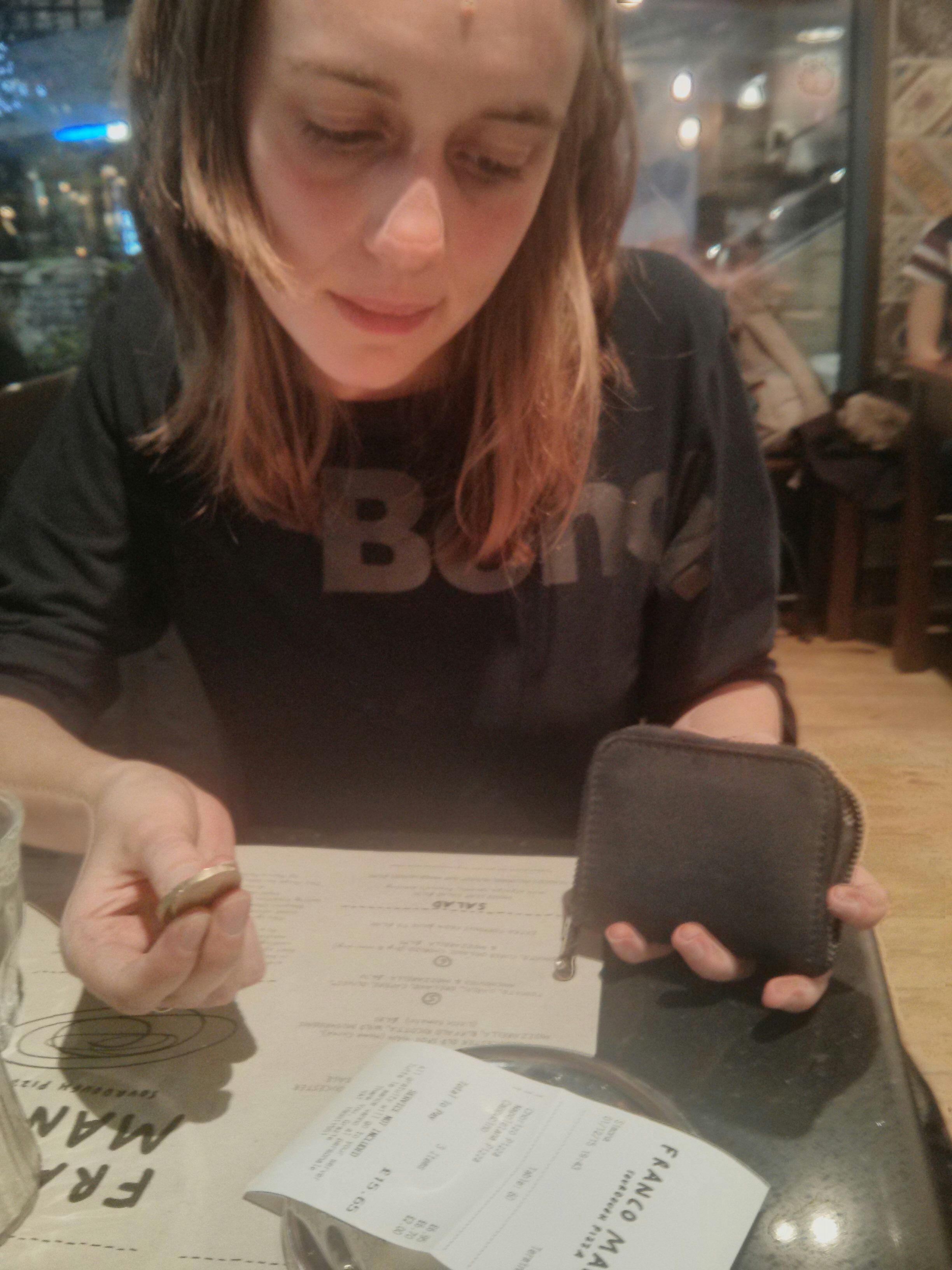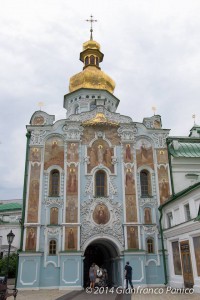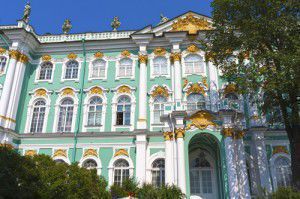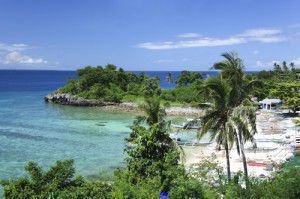To tip or not to tip?
A social dilemma you’re bound to fall into at some point is whether or not to tip – and how much! Tip too little and you risk the waiter chasing you down the street shouting abuse; tip too much and you might gravely offend the staff. Tipping customs vary all over the world, between different countries and regions (not to mention situations), so do your research before you travel!
How much should you tip?
In the USA, tipping is mandatory and fairly high, with 15-20% being expected. Service wages are fairly low, meaning people factor tips into their pay, and waiters will ask you where their tip is if you haven’t left one.
In the UK, tipping is more relaxed and is never really expected in a pub or cafe, or anywhere with self-service. In restaurants, 10% is usually expected, but if you feel the service was poor then you can express this by not leaving a tip.
Move into Romania, however, where 10% is also recommended (more if you’re really happy with the service), and not leaving a tip would be considered very rude: do not try to return to a restaurant where you didn’t leave a tip.
Drinking tips
In lots of countries in Europe, the traditional attitude towards tipping can be seen in the language: German ‘Trinkgeld’, Swedish ‘dricks’ and Danish ‘drikkepenge’ all mean ‘money for drinking’, as does the Slovak ‘prepitné’, French ‘pourboire’, Slovenian ‘napitnina’, Serbian ‘напојница’ and Croatian ‘napojnica’. The idea behind this is that you just round the bill up or leave a few coins, as a contribution towards a drink for the waiter.
Further East, the direct translation is even more specific: in Russia, you leave money ‘for tea’ (‘чаевые’). The same is true of Kazakh‘s ‘шайлық’ (шай- shai- tea’), Uzbek‘s ‘чойчақа’ and Tajiki‘s ‘чойпулӣ’).
Beware, however, that tipping practices have changed significantly and just a few coins often won’t cut it any more in these countries: be prepared for at least a 10% tip, as a broad guideline.
When not to tip
So far, the problem has only been how much to tip, and if you’ve accidentally tipped too much in America or Europe, it won’t cause any massive problems. But in some areas the attitude towards tipping changes drastically.
In Malaysia, Singapore and Japan tipping is not practised at all and could be considered odd or even offensive.
In Georgia, it can be seen as an affront to the notion of hospitality. Beware as well that a tip can easily be misconstrued as a bribe, which you definitely don’t want to get in trouble for, so make sure you look up before travelling whether tipping is normal practice in the country you’re visiting!
Have you ever been caught out by tipping etiquette?
Nat
10 reasons to visit… Kiev
A couple of months ago, I spent a few days in the Ukrainian city of Kiev, which turned out to be a fascinating and occasionally surprising place to visit. So here, in no particular order, are my top ten reasons to go and check it out for yourself.
1. It’s so cheap!
Probably one of the highlights of spending five days in Kiev was figuring out how much we’d just paid for each meal, trip etc… After eating a ridiculously large lunch at the fantastic Vagon, including drinks, appetisers and dessert, we realised it only cost £15 for two people. And even better, you can ride the Metro for about 10p (regardless of distance), take buses all over the city for 10p and ride the Funicular for about 20p. Taxis tend to charge you a flat, tourist rate of 100 hyrynas, which is still only around £5 to get from the airport to the city.
2. Chill out on the beach
Yep, there’s a beach. If you cross the bridge to the other side of the river, there’s a proper sandy beach where locals go to soak up the (surprisingly hot) sun. You can abseil from the top of the hill down to the beach, bungee jump from the bridge, swim in the river, or just sunbathe and eat ice creams that cost you less than 50p.

3. Crazy nightlife
Ukrainians seem to like to party, with lots of booze and dancing! Coyote Ugly is a favourite spot where you can smoke shisha, drink vodka shots, dance on the bar, and still come away with change from £20. However, be warned that if you ask for water in a British accent, you’re likely to come away with yet another (unwanted) shot of vodka! Apparently Arena City (quite central) is also worth a look with several different bars and outdoor seating areas.
4. Maidan square
Maidan is the city’s central square and home to some of the most recognisable statues and monuments. During our visit, it was also home to numerous barricades – many built from rubble, rubbish, tyres and whatever else was to hand. There were also many burned-out cars and even buildings which had been burned out by the police during the recent conflict. People had even pulled up the cobblestones from the ground and used them to throw during the riots. Here and in Khreschatik street you’ll also find lots of memorials to people who died during the revolution.
5. Take a trip to the world’s most famous nuclear disaster site
Admittedly this might not be on every tourist’s to-do list, but it certainly was on mine! You can take a day-trip to Chernobyl for around £100 per person, which includes an extremely well-organised bus trip to the town, lunch, fully-guided tour by really excellent guides and the amazing opportunity to take pictures by the reactor and in the deserted town of Pripyat, with its famous funfair, which was never opened to the citizens of the town before it was evacuated in 1986.

6. Brunch at Koritsa
I don’t know if this place is particularly famous, but it should be, for its awesome brunches with eggs, pancakes, cake and whatever else, plus juice and coffee for less than £15 for two people. Also try Vagon for its fantastic tagines, Varenichnaya for Ukrainian specialities (Vareniky are ravioli-esque dumplings) or Puzata Hata, which is a cafeteria-style chain that sells Ukrainian food by weight.
7. Take the Funicular up the hill
If you read Liz’s post a few months ago about her trip to Naples, you’ll remember she had a trip up the hill on the ‘funicolare’. Well this is pretty much the same thing… A carriage which takes you up the side of the hill for the eye-watering price of 20p. When you’re at the top, you can enjoy an amazing view of the city and river, as well as the park (albeit with very spiky grass) and one of the more surreal monuments – the archway representing friendship between Russia and Ukraine… The less said about that the better, maybe. Try a Kvas which is a really, really strange drink – something like a very sweet, non-alcoholic beer.
8. Beserabka market
This is a covered market just off Khreshatyk (the main street) and is a great place to wander around and see a range of really great quality fruit, caviar, salami, cheese and lard (which is strangely popular here…). Just be aware that the vendors will do the hard-sell on you even if you don’t speak Russian. We walked through with no intention of buying anything and came away with a jar of caviar and a block of cheese without even realising what was happening!
9. Pechersk Lavra
This landmark translates as something like the Monastery of the Caves, and is a particularly unique site, where you can spend at least a whole afternoon. It’s a complex of various different churches, as well as the crypts below where you can see the mummified bodies of saints by candlelight. The architecture here is particularly spectacular, with a myriad of golden domes, not to mention a great view of the city.
10. Sightseeing all the monuments around the city
There are loads of different statues and buildings around the city that are worth seeing. Climb the hill to see the St Andrew Church (and an amazing view), visit the St Sophia Cathedral (one of the Seven Wonders of Ukraine, apparently) and several other cathedrals, churches and more…
Don’t forget to download our free app, uTalk, and learn the basics in Russian or Ukrainian (or both!) before you leave – not many people in Kiev speak English, so you may find knowing a few words can make a huge difference.
And if anyone has any other tips or reasons to visit Kiev, please let us know in the comments!
Alex (with thanks to Gianfranco for the photos)
10 reasons to visit… Russia
Today, we’re going to Russia. At least in spirit. Here are my top ten reasons for visiting Russia – and, trust me, it’s been hard narrowing it down to ten!
1. Train Travel
Travelling by train is arguably the best thing you can do in Russia, so try to leap on one as soon as you arrive. Everything about it is an experience, especially if you’re used to the slender commuter trains of the UK. In Russia, trains are absolutely vast, and appear even more so since you have to climb up into them from ground level. They are slow and ponderous, stopping for twenty minutes or so at each station (enough time for you to get out, stretch your legs and if you’re lucky buy a smoked fish from a vendor on the street) and crawling in between.
Inside, a strange etiquette reigns, so that on the plus side you might be invited to share food and drink with your neighbour, and on the minus side you will be obliged to give up your ground level bunk to anyone older than you who only managed to secure a second tier berth. Presiding over the whole show is the train assistant, who will sell you bed linen and glasses to make tea from the great water boiler at the end of the carriage, and as a special bonus will shake you vigorously by the foot to wake you before your stop.
2. Petersburg
The Hermitage, obviously. You could easily spend a day wandering around it, drinking in all the extravagant beauty. In fact all of Petersburg is nice for walking around dreamily, looking into little museums and palaces and drinking coffee on Nevsky Prospekt.
3. Moscow
Tricky condensing this into one paragraph, but I think the best things to do in Moscow are to get the metro (looking at the sumptuously decorated stations along the way) to Sparrow Hills and there look at the view, then go out to the Novodevichy Cemetery where you’ll find various big names, including Shostakovich, Bulgakov and Mayakovsky. This cemetery shows enormous wealth and the desire to show it off after death, so look out for any especially showy tombstones. Then, of course, Red Square and the Kremlin are worth a good long visit, as well as Lenin’s Mausoleum, if you don’t mind being marched past the body at a fair lick and glowered at by armed guards from every corner within.
4. Hospitality
Although Russians often seem to have a reputation for being a bit moody when you first meet them (especially if you meet them on the street or in a public place, where it is a little frowned upon to show excessive emotion), you can very quickly make solid friends for life in Russia. Advice (on clothing, appearance, relationships, career choices) can be offered pretty freely in a way that can be startling, but is generally very well-intentioned. If you’re invited round for dinner, take a bottle or some chocolates, as there will probably be a very generous spread laid on for you.
5. Dachas
If you’re looking for a little bit of peace and quiet, try to get someone to invite you to their Dachas, as this is where Russians traditionally kick back and relax. Out in the country with big allotment-style gardens around them, dachas often are simple buildings with outside toilets and local wells supplying water. People grow vegetables (lots of them), pickle vegetables (often enough to last them through the winter months), make wine and home-brew alcohol, go fishing, hunt for mushrooms, and generally have a great time.
6. All night life
Go out in most cities in Russia and you can stay out all night. All night! And it’s not just clubs that stay open all hours, but cafes and restaurants too, so that you can actually stay in the same building and have an evening meal, go dancing, get breakfast, sit with a paper and carry on right into lunch, if you want to. A lot of places which look like inoffensive coffee houses and restaurants will acquire some dance-floors and professional dancers come evening, meaning you don’t have to venture out into the cold at all if you don’t want to.
7. The banya
Like with the dacha, if you’re after traditional Russian relaxation then go to a banya. A lot of towns will have public ones (often separate bathing days for men and women) but lots of dachas will have their own private ones. Russians like it pretty hot so if you’re not used to it then it might be a bit of a shock to the system. Extreme, humid heat is followed by being doused with bowls of cold water – relief for a few seconds, at least. Beating each other with birch twigs is also standard practice, but can seem like you’re crossing a barrier if you end up engaging in it with your host.
8. Food
Russian food is all interesting and delicious, but what is particularly excellent is snack food, widely available on kiosks on any street corner. Ever had crisps flavoured with caviar or sour cream and dill? Or dried bread croutons, watermelon-flavoured chewing gum and dried salt fish (a traditional beer snack)? In bars and cafes, beer can be accompanied by fried cheese and deep-fried sticks of bread, or long laces of deeply salted, chewy cheese.
Not that all Russian food is snack food – far from it. Porridge in Russia is so varied that you can have porridge made from a different grain every day of the week, and people take pride in making the traditional soups (you’ll probably come across borshch, the beetroot soup shchi, the cabbage soup, and solyanka, the delicious soup with olives) and salads (of which arguably the best are selyodka pod shuboy – herring under potatoes, mayonnaise and grated beetroot – and salat Olivier, know worldwide as Russian Salad).
9. Weather
Being vast, there is a vast range of weather, but the cold winter is something Russia specialises in and there are lots of excitements around it. Fur markets (selling hats and coats in everything from rabbit to mink) spring up and it becomes a squeeze fitting everyone into the trolleybuses with their extra padding of coats, jumpers, thermals. On the lakes, people will bore holes in the ice and go ice fishing, traditionally accompanied by another, fishy soup, uha, into which you pour a shot of vodka just before eating.
10. Queues
Bit of an odd plus to end on, but queuing is a real art in Russia and it’s such an everyday thing that I quite miss it. The best sort of queue is at a train station, where your first big decision is which queue to join. Don’t be fooled into joining the shortest one, as it might be short because the cashier is about to take her hour-long break. A very small understated sign in the window will give the break times so you can estimate how long it will take the queue to move and choose a line based on that. It’s often best to be armed to the teeth with all the information you might possibly need to book a ticket (train number, date, type of carriage, whether or not you want linen) before getting to the front of the queue, as often the attendants don’t have time for dalliers and won’t hesitate to send you to the back of the queue if they see you floundering.
The other thing to remember about a Russian queue is that when you join it it might be quite a bit longer than it looks. This is because Russians will stand in several queues at once, physically in one and then virtually in another by simply telling the last person in it that they are standing behind them. It’s then the responsibility of that person to advertise the virtual person to anyone who comes along afterwards and of the newcomer to ask who is last (can be a bit confusing when the response to this is to point to someone the far side of the room). Depending on which queue reaches the window first, the queuer will either renounce their place in other queues or niftily dash across to reclaim one of their virtual places.
Got any favourite things about the country you’d like to add? We’d love to hear them! And don’t forget to learn a little of the language before you go.
Nat
15 cultural faux pas to avoid when travelling
Before you go on holiday, or on a business trip abroad, it’s a great idea to learn a little of the local language. But getting along with people is about much more than just the words you say. There are other rules too, so here are our top tips to avoid misunderstandings abroad.
1. Be very careful when exchanging business cards in Japan: they aren’t just cards, but representations of the giver and should be handled with some ceremony. NEVER write on a business card or put it in your back pocket, as this is considered disrespectful.
2. Don’t talk about work over dinner in New Zealand, even if you’re having a meal with your colleagues. It’s fine to talk business over lunch, though.
3. In Muslim countries it’s considered an insult if you show the soles of your feet, so watch how you sit.
4. If you’re in Hungary and you’ve been told your meeting is at ‘fél négy’ (‘half four’), don’t turn up at 4:30 – ‘fél négy’ actually means half an hour TO four, so you’ll need to be there at half past three.
5. On the other hand, if you’ve been invited to a gathering in France, always aim to arrive 15-30 minutes late, to allow the host time to get ready.
6. Making a circle with your forefinger and thumb as another way of saying ‘OK’ is seen as an extremely offensive gesture in Brazil. As is the ‘thumbs up’ gesture in Iran, and showing your palm in Greece. It might be better to just avoid hand gestures altogether…
7. In Germany, not making eye contact when you clink glasses is considered very rude. It also, apparently, means you’ll have seven years’ bad luck in the bedroom. So even if you’re not worried about being thought bad-mannered, it might be worth making the effort. Just in case.
8. In Bulgaria, nodding your head means no, and shaking your head means yes, which is the opposite of what most of us are used to. This is worth remembering or you could get yourself into all kinds of trouble.
9. It’s been illegal to bring chewing gum into Singapore since 2004, because of the damage being caused to public buildings and facilities by people leaving their gum behind. You can also be fined for not flushing a public toilet.
10. In Russia, if you’re giving someone flowers, make sure you give them an odd number. Even numbers are for funerals.
11. It’s important to show respect to your elders in Asia, so don’t call them by their name; instead use ‘Auntie’ or ‘Uncle’, even if you don’t know them.
12. When eating a meal in Spain, you’ll be expected to clear your plate, and leaving some food is seen as rude. In Russia, on the other hand, you’re expected to leave a little as a sign that your host has provided enough to fill you up. And in China, a polite belch when you finish eating is considered a compliment to the chef, although it’s frowned upon in many other countries.
13. Never say anything disrespectful about the king in Thailand, as this could land you in prison for several years.
14. Make sure you’re appropriately dressed before going to church in Italy. This means your shoulders, knees and midriff should all be covered, or you won’t be allowed in.
15. In Malawi, it’s common for people of the same sex to hold hands; this is a sign of close friendship, so don’t worry if someone tries to take your hand. It’s a compliment. Men and women holding hands is rare, though, and may be frowned upon.
As always, if anyone has any others, we’d love to hear from you!
10 of the world’s most amazing places
One of our top tips for learning a language is to take a holiday – it not only gives you a chance to practise your new language with the locals but you also get to visit somewhere nice. And why not take the opportunity to visit some of the world’s most amazing (if sometimes slightly bizarre) places while you’re at it?
1. San Alfonso del Mar
Like the world’s largest swimming pool, for instance, which is at San Alfonso del Mar in Chile. If you’re thinking of swimming lengths, you might want to stock up on energy drinks before diving in to this one. It’s more than 1,013 metres long, so paddlers should beware! It also has a 35-metre deep end – not for the unwary swimmer. The Guinness Book of Records named this pool as the biggest in the world, needing 66 million gallons of water to fill it up.
2. Mt HuaShan
Or maybe you’d like to visit a traditional Chinese tea house. What about this one, at the top of Mt. HuaShan? It’s 2,160 metres high and the path to get there is nothing short of terrifying. It’s thought that there may be as many as 100 fatal falls a year, and yet the trail is popular with tourists, keen to visit the teahouse, on the southern summit of the mountain, which used to be a Taoist temple, or the chess pavilion on the east peak.
3. Stewart Island
If bird-watching is your thing, you could visit Stewart Island in New Zealand. It’s one of the most remote destinations in the world, with only one town, Halfmoon Bay (also known as Oban) and an estimated population of just 450 people. The island is the only place to see the Kiwi bird in its natural habitat and is also home to five species of penguin.
4. Pink Lake
Next door in Australia, Pink Lake, just west of Esperance, is worth a visit. As its name would suggest, in certain weather conditions the water in the lake is pink, thanks to a particular kind of algae in the water. And this isn’t the only pink lake in the area. Lake Hillier, on Middle Island, is another example and an even brighter colour.
5. Joffre Lakes
However, if you prefer your lakes blue, the Canadian park of Joffre Lakes in British Columbia comes highly recommended. The lakes are a more traditional, but stunningly beautiful, turquoise blue and surrounded by peaks and glaciers. A trip to Joffre Lakes isn’t complete without an overnight stay, where you can camp under the stars and listen to the ice calving from the glacier.
6. Kizhi
The Russian island of Kizhi is found almost exactly at the centre of Lake Onega and boasts a spectacular wooden church, the Church of the Transfiguration, which was built in the 18th century without a single nail. Legend says that the lead builder used just one axe for the whole building, and then threw it in the lake when the church was completed, saying, ‘There was not and will not be another one to match it.’
7. Kayaköy
Just a few miles from the popular resort of Fethiye in southwestern Turkey, on the side of a mountain, is the village of Kayaköy. Greek-speaking Christians lived there until the 1920s but the village was abandoned follow a population exchange agreement between Turkey and Greece in 1923. Now a museum and historical monument, Kayaköy is a beautiful but rather eerie ghost town.
8. Capuchin monastery
Speaking of eerie, the Capuchin monastery in Sicily is home to 8,000 mummified corpses in the monastery catacombs. The bodies are all dressed in their best clothes and arranged in different rooms according to the type of person. The oldest in the collection dates from 1599, while the most recent addition is the body of Rosalia Lomabardo, who was embalmed in 1920 and is known as ‘Sleeping Beauty’.
9. ICEHOTEL
If you’re looking for somewhere a bit different to stay, you could try the ICEHOTEL in Jukkasjärvi, Sweden. Made with ice from the Torne River, the hotel offers ice and snow rooms, and runs a survival course every night for new guests on what to wear and how to cope when sleeping in temperatures below zero. But don’t worry – warm rooms are also available if you’re not a fan of the cold.
10. Malapascua
One extreme to the other – the island of Malapascua in the Phillippines boasts beautiful beaches and is most popular with divers, as it’s the only place in the world to see the pelagic thresher shark. There’s no transport on the island because it’s small enough to walk everywhere, and the only way to arrive on the island is by banca (a local boat ferry).
We hope that’s given you a few ideas for your next holiday. Don’t forget to learn a few words in the local language before you leave! And if we missed your favourite place, let us know in the comments…












